Deadly disasters are ravaging school communities in growing numbers. Is there hope ahead?
After one of the deadliest wildfires in U.S. history, Philip Raya, his wife and two young children drove through the wreckage of Lahaina – looking at bodies and the ashes of the town they once called home – en route to a new start on the other side of Maui.
There were many devastating sights. Their longtime neighborhood school, King Kamehameha III Elementary, had burned down. The green-painted oceanfront campus lived next to the community's treasured Banyan Tree.
For the family kids, Isabella, 8, and Niko, 6, the destruction is incomprehensible.
"We get questions from our kids: When are we going go back to our old school? And when are we going to go back to our own house? We don’t really have the answers," Raya said. "These are uncharted waters for us."
An increase of natural disasters from wildfires to floods to hurricanes to tornadoes – exacerbated by climate change – have ravaged America’s schools since students returned to in-person learning after the COVID-19 pandemic. And manmade disasters from lead in drinking water to asbestos in school buildings are playing a role.
This school year alone, devastating wildfires exacerbated by winds from Hurricane Dora ravaged one school and damaged three others in Maui. And winds from category three Hurricane Idalia destroyed the roof of an elementary school in Hoboken, Georgia. Kids attending schools without air conditioning were sent home at the beginning of the school year in Puerto Rico, Philadelphia and in other areas of the mid-Atlantic and Northeast because of extreme heat.
Last school year, torrential rains and damaging winds from Hurricane Fiona ravaged schools in Puerto Rico, schools closed in pockets of California after a bomb cyclone and Pacific storms caused flooding. A tornado in Whiteland, Indiana, dismantled internet connection for families across the region. Lead in drinking water Jackson schools closed campuses in the past few years more times than one teacher could recall in an interview with USA TODAY.
And old buildings that were found to be lined with asbestos led to closures of at least six campuses across Philadelphia – sending thousands of kids to cram into other occupied schools.
On top of students losing crucial instruction time as they recover from pandemic-related learning loss, some of their school buildings were demolished, and some of their families and teachers lost their homes and jobs. And others have been separated from their friends and communities.
The kids who experience disasters are at risk of additional adverse mental health consequences, including "anxiety, fear, sadness, sleep disruption, distressing dreams, irritability, difficulty concentrating, and anger outbursts," according to the Centers for Disease Control and Prevention.
Climate and education experts, families and educators across the nation told USA TODAY it's the latest crisis to hit American education – and communities from Hawaii to Florida.
'There's no certainty about anything'
For the Raya family, sticking around meant Isabella could fall further behind academically. She already is struggling to read because of COVID-related setbacks, Raya said. And they're not sure if they'll be able to return to the area where King Kamehameha III Elementary School once stood after losing their businesses and income.
"We’ve had to weigh our choices: How long are we going to do this before we sell our house off and move?" said Raya. "It goes back to what we have to tell our kids when they ask questions. We're weighing it every day – one by one – and there’s no certainty about anything."
Some pockets of the country are taking an additional hit to pandemic-related school closures. National CDC research shows natural disasters disproportionately affect poor and ethnic minority communities. And their schools are often turned into temporary shelters during disaster.
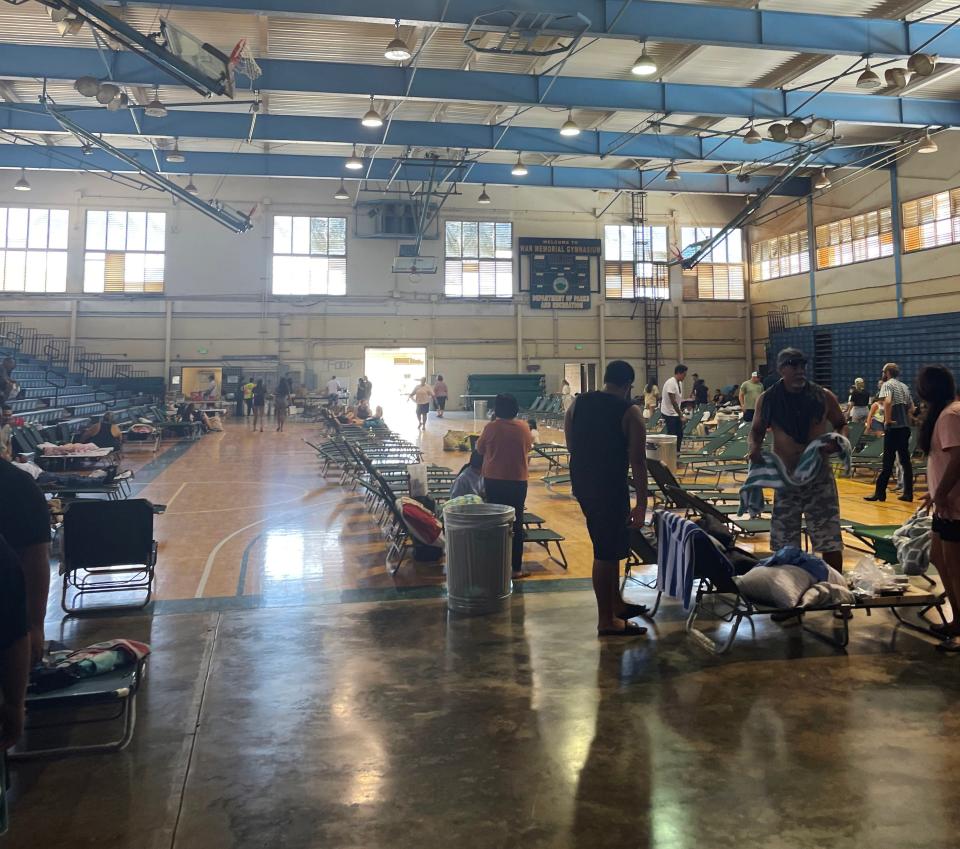
The Federal Emergency Management Agency last year estimated more than 300 federally declared major disasters hit the nation between 2017 and 2019 and more than half of the nation's schools were in the affected counties, according to a study from the Government Accountability Office addressed to the Congressional Committee.
About 4 million kids attend schools in the nation's flood zones, according to a report from Pew Charitable Trusts.
"We have found that school districts affected by natural disasters have faced a range of recovery challenges, including trauma and mental health issues among students and staff, lost instructional time, staff burnout, and financial strain," the federal accountability office's report found.
The Government Accountability Office reports that disadvantaged school communities "including children who are low income, minorities, English learners, or living with disabilities ... are particularly susceptible to the adverse effects of disasters." They also may need more recovery assistance compared to districts with less vulnerable student populations.
At the same time, a legion of schools don't have safe drinking water due to high levels of lead in school fountains and taps, which can affect children's brains and nervous systems, according to a report called "Get the Lead Out." It was written by John Rumpler and Matt Casale from the Environment America Research & Policy Center and the U.S PIRG Education Fund.
Manmade disasters can be hard to see with the human eye, Rumpler said, but they can have damaging effects on school children and their academic achievement.
"The trouble with lead in water is it’s highly variable and not like the poster child of a little kid eating chips of lead," he said. "Even the more lower level of lead poisoning can threaten kids health in the most insidious ways."
Environmental changes impact student learning, mental health
This summer was the Earth's hottest on record, according to federal scientists from NASA and the National Ocean and Atmospheric Administration. The warming trends are leading to more forest fires and stronger storms and hurricanes, according to recent data from the Global Forest Watch and the Environmental Defense Fund, respectively.
Cassandra Davis, a professor of public policy at the University of North Carolina at Chapel Hill, has long warned people about environmental impacts on schools. Only recently, they're started to listen, she said.
She and her colleague Sarah Fuller analyzed the effects of student learning that Hurricane Florence and Hurricane Matthew had on kids in North Carolina schools in a study of 15 affected school districts, in a report called "Academic Progress for Students Following a Hurricane."
They found that students "experience stress, are displaced from their homes and lose belongings," and "at the same time, schools may be closed for days and weeks, removing students from their sense of normalcy and taking time away from instruction." Both factors "make it more difficult for students to achieve in school during the aftermath of a disaster," the report says.
There is a glimmer of hope for students who attend schools that close for a short time period as opposed to the longer-term closures Americans saw during the pandemic, said Rebecca Miller, a postdoctoral scholar with the West on Fire project at the Huntington-University of Southern California Institute on California and the West.
Miller and her colleague Iris Hui last year looked into academic performance in cases where schools were closed between one to five days "due to wildfires, natural hazard impacts, infrastructure, and student safety" in California. They analyzed SAT, ACT, Advanced Placement and state standardized test scores.
They found that closures extending to 10 days were "generally insignificant, except for the negative impacts of wildfire closures on elementary school students." Older students were more resilient to the closures, as shown by their score performance, Miller said in an interview.
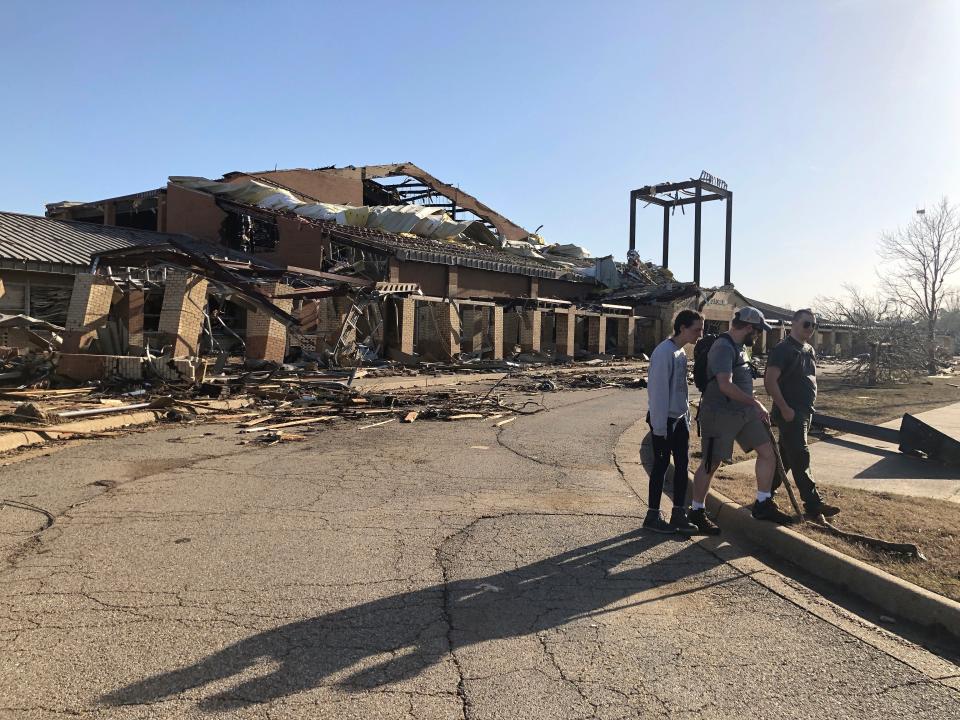
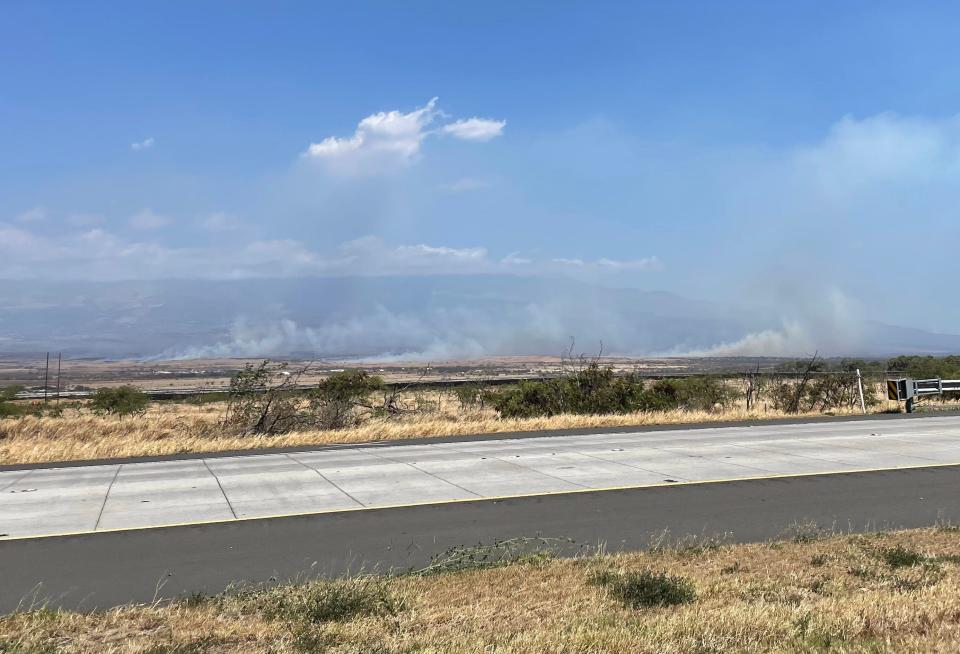
The American stories of disasters in schools
Lillian Bayron Ferreira and Morgan Martinez teach in Puerto Rico where a "domino effect" of environmental disasters has hit in the past several years. Between Hurricane Fiona to devastating earthquakes to scorching temperatures upwards of 100 degrees, school structures, kids' academic progress and the community's spirit have suffered, they told USA TODAY.
How did your state fare? Reading and math test scores fell across US during the pandemic.
On Sept. 8, the Puerto Rico Department of Education closed schools because of temperatures reaching scorching temperatures. Officials also said they will consider shifting the hours of the school day after the Puerto Rico Teachers Association advocated for the change.
Only two rooms of about 20 at Bayron Ferreira's school at Luis Muñoz Rivera Elementary School have air conditioning, she said.
"The kids are having (heat)strokes because of the heat and losing consciousness, or experiencing headaches, nausea, vomiting, general symptoms of the heat wave," said Bayron Ferreira. "They’re tired and because of that they don’t pay any attention to focus on the teachings."
There are fistfights in the schoolyard as more kids act out due to anger or frustration, she said. And she's anxious about the kids who are academically behind.
"We have children in fourth grade that still can’t read," she said. The U.S. territory ranked the lowest in the nation in math proficiency on the Nation's Report Card after the pandemic.
Families moving out of areas, lives shaken up
Several families have moved their kids out of Puerto Rico in response to disasters, and enrollment in schools has declined, said Martinez, who taught at Interamerican University in Puerto Rico before he retired. U.S. census data shows more than 123,000 people left for U.S. states after Hurricane Maria.
Charisse Moses' husband scrambled to adjust his work schedule when officials at the Philadelphia School District announced a half-day schedule at Henry H. Houston School, where their two kids attend classes. She felt the heat inside of the school at a recent parent-teacher night.
"I really cannot fathom little kids aged 9 and 7 trying to learn in this environment," she said. "It's so hot you can’t even think straight."
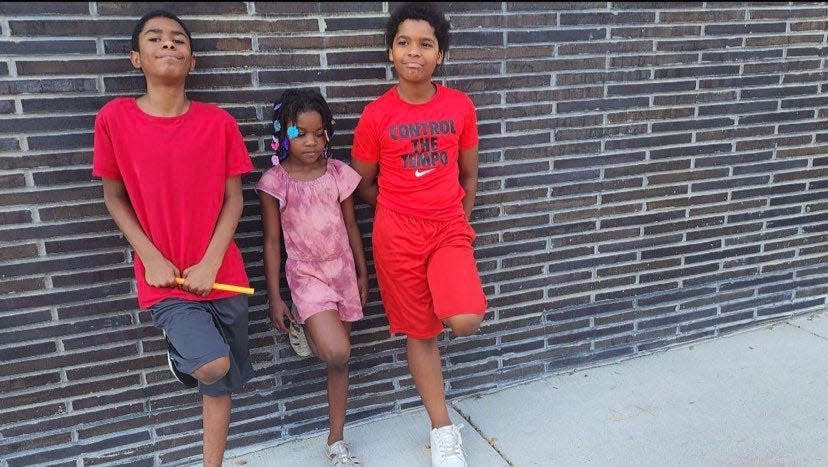
The half-days also altered third grade math teacher Jason Bui's beginning of the year routine: teaching kids classroom rules and procedures.
Now weeks into the school year, he's behind where the district says he should be on the math curriculum, he said. Attendance dropped, he said, and those half-days were "pretty brutal" in a classroom without air conditioning at Mitchell Elementary School in South West Philadelphia.
The school is on the list of several in the district that officials said needed to be closed in the afternoons because of the heat.
The closures are routine at the end of the school year, he said, but the beginning of the year half-days are newer. His school was also closed from last spring break to the end of the school year after asbestos was found in the building – negatively affecting the members of the chess team he leads and the students he teaches at the school.
"It's just not fair," he said.
Some of schools that officials closed because of the heat due to state policy – like his – are in Philadelphia's poorer communities. One of Moses' kids goes to another school in the district where "it's very well air-conditioned and more often than not it’s cold." Both said they expect the trend to continue as temperatures rise and school buildings stay the same.
Of the more than 200 schools in the district, Monique Braxton, a spokeswoman for the school district, students from up to 86 schools were sent home early during the beginning of the school year. To fix the problem, old school buildings – averaging 73 years old – need new electrical grids that can handle cooling systems, she said. The district estimates it needs about $7.7 billion in state and federal aid to address aging infrastructures, according to a 2017 Faculty Condition Assessment from the district.
Braxton said online learning during short dismissal days is an option.
Joshua Goodman, an associate professor of education and economics at Boston University who studies extreme heat in schools, said the ideal solution to growing problem is air conditioning. But schools can explore other solutions to cool schools that don’t necessarily involve air conditioning in the meantime, including planting more trees and vegetation and shade especially in urban areas.
'We went through a war zone'
Back in Maui, Raya and his wife lost two businesses they owned – an indoor cycling studio and a boutique retail store in the fires, and their jobs and income. Their home survived, but they can't afford to pay the mortgage and stay in the area near their friends and community. "We had to give up their home and schools," he said.
Isabella draws pictures of her home and friends and Niko is trying to work things out by playing sports. Right after the fire, the kids started having nightmares, acting out with anger and suddenly wanting to eat sugar.
"We’re hardened," he said. "It feels like we went through a war zone."

Three more schools were damaged by the winds, including Lahaina Intermediate School where Kati Hedden teaches eighth grade English.
She's devastated about the loss they are facing on the campus she's worked at for six years.
"It's a really incredible school. ... It's like something out of a dream," she said. "You drive out on Lahainaluna to ocean views and huge West Maui mountains rise up. Often there’s a rainbow and when you turn and face the ocean you can see all of Lahaina. ... You can see whales jumping and people out who are parasailing."
Hedden was on a boat from Lahaina to the San Francisco Bay Area when the wildfires devastated more than 2,000 buildings. Days later, she found out about the fire and that her condo with her belongings inside burned down. She's taking a temporary leave from her job, but when she returns to the island from California, she could be staying with friends until she can afford a new home.
Educators face post-disaster mental health struggles
At a recent board meeting, Hedden asked the Hawaii Department of Education to supplement housing for teachers like it does in some other parts of the state. It's hard to be away from her students, she said.
"Lahaina kids are really kind people," Hedden said. "They're doing wheelies on Front Street and they’re down at the water at sunset swimming with their friends. ... And the community is incredible in always coming together."
Davis said educators face mental health struggles in disasters, too.
"They're putting on another role as an emotional support person for that student and at the same time they’re going through a traumatic event," she said.
Community members are also pressing Hawaiian education officials to locate hundreds of students who are unenrolled from schools across the state. Officials said in a statement Sept. 15 that they have made active contact with 94% of the 3,001 students "who were pre-registered to attend one of the four Lahaina public schools for the 2023-24 school year."
At a recent school board meeting, they announced plans to reopen the damaged schools in mid-October and work on a "new, permanent campus" for King Kamehameha III Elementary.
Reflecting on the ruin in Lahaina, Raya said communities need to plan better "for the next disaster for these schools." One suggestion, he said, is legislation requiring backup facilities where schools can host kids "if something like this happens."
What is the path forward? Jackson, Mississippi, water crisis closed school campuses (again).
Heat wave in Mid-Atlantic, Northeast: Forces schools to close, modify schedules
'How will we recover?'
The U.S. Department of Education's Disaster Recovery Unit is assisting with more natural disaster recovery efforts in recent years, but it is spending fewer dollars on each one, according to federal data provided by the department. It granted Project School Emergency Response to Violence financial awards to 24 local education agencies and colleges in the past three years to California, Colorado, Oregon, Puerto Rico, Mississippi and Florida with a total spending of more than $5.5 million.
By comparison, in 2018 and 2019, the unit awarded nine financial awards worth a total of nearly $15 million to school districts in California, Florida Texas, the U.S. Virgin Islands, Puerto Rico and the Commonwealth of the Northern Mariana Islands, and North Carolina. The additional funding for those years came from the 2018 Bipartisan Budget Act and 2019 Disaster Supplemental, said Vanessa Harmoush, a spokeswoman for the department.
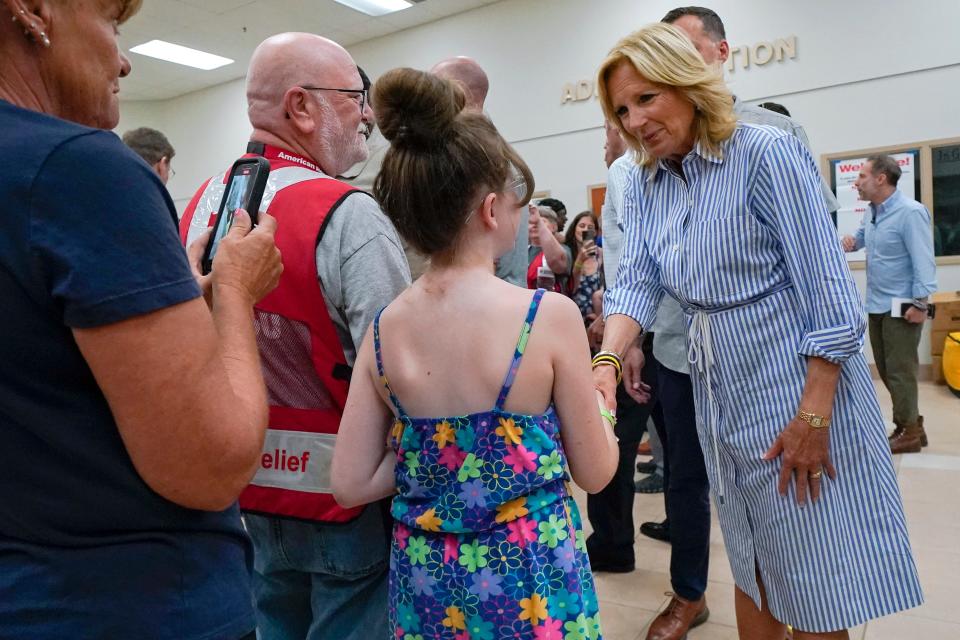
Following a major natural disaster declaration, the unit "participates in FEMA-led federal recovery efforts," Harmoush said. Schools can apply for Project SERV disaster recovery grants for funding, she said.
Before moving toward solutions, Davis said people have to recognize the inequities between the intersection of the American education system and increasing environmental concerns.
"My fear is: We’re looking at places like Morocco and Pakistan and Libya and other places internationally that have been devastated. But what will happen when those events come to us and our own backyard?" Davis said. "How will we recover from those sort of travesties, and what does justice look like?"
Contact Kayla Jimenez at kjimenez@usatoday.com. Follow her on X, formerly Twitter, at @kaylajjimenez.
This article originally appeared on USA TODAY: Disasters are changing the US landscape - both in towns and in schools

